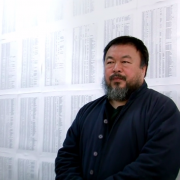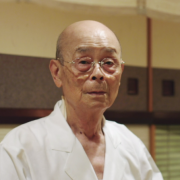Tuning in to Life’s Minor Characters
It was a shock to the baby boomer eco-system of a friend when her millennial daughter called her one night last winter and asked, “Have you been listening to that show on NPR?”
That show on what?
Was her daughter – the one who always moaned and groaned about listening to NPR on long car trips – actually sitting in her Brooklyn apartment and listening to a show on the radio? Not quite, of course. She was sitting in her apartment, yes, but she was listening to the latest installment of NPR’s ‘Serial’ podcast, the medium’s first runaway hit and a global sensation.
Fast-forward one year. Same daughter, home for the holiday. Binge-watching ‘Making a Murderer’ on Netflix.
Granted, both are murder mysteries. But murder mysteries are a dime a dozen; there are just so many episodes of ‘Dateline’ one can take. What ‘Serial’ and ‘Murderer’ are, though, are examples of pure storytelling at its very best. And as great writers will attest, meaningful, important stories can be told about almost anything…if you listen closely enough.
At a talk a few years ago at Boston University’s School of Communications, the legendary writer Gay Talese said that, in over a half-century as a journalist, “life’s minor characters often have the best and most meaningful stories.” He went on to say it takes curiosity – “not nosiness” – but a sincere curiosity, and the patience to get to know people. “They underestimate their own significance,” Talese said of ordinary people, “but you can walk a block and find stories by the dozen.”
General Electric has become a consummate corporate storyteller under the guidance of Beth Comstock. She’s currently GE’s first female vice chair with a new title leading Business Innovations. She was previously this mega-corporation’s chief marketing officer (CMO) and has spoken eloquently about how corporate storytelling can and should capture the imagination. When she spoke at the Future of Storytelling Conference in 2014 she began by asking, “How can you be memorable when you have very complicated things to talk about?”
This made me think of all the healthcare clients I’ve worked with, where answers are not always 100% certain but a path forward is being forged based on the dedication and untold hours and weeks and months and years of work behind the scenes. And of how, when asked and truly listened to, some of the most passionate storytellers are not necessarily the CEOs of these companies but the researchers behind the scenes who’ve devoted their lives to scientific discovery.
Echoing Gay Talese, Ms. Comstock said, “I think if you begin with the premise that your company can be a story teller, you find storytellers everywhere. I find some of our best storytellers are engineers. I think what you need to begin with is kind of a central group that’s good at translating and eliciting a passion in someone that gets them to tell their story.” She continued, “You are almost afraid to look at what you have. But when you embrace who you are and find an elegance and a beauty in it, it’s amazing where it takes you.”
Fittingly, GE is sponsoring a new award being presented for the first time at the Tribeca Film Festival in April 2016 – the Tribeca X Award “to celebrate the best collaborations between filmmakers and brands.” It will be awarded “for works that exemplify the best that branded storytelling has to offer.” Jane Rosenthal, who co-founded the Tribeca Film Festival with Robert DeNiro, told AdAge that “for the past decade, a shift has taken place across traditional models of entertainment, art, and advertising, as brands step in to serve as financiers and studios, and become catalysts for high-quality, provocative storytelling.”
Storytelling is the most ancient of arts – and now one of the hottest buzzwords in the communications firmament. Storytelling has always been the heart and soul of how we, as communicators and as human beings, connect and persuade each other.
But today, as with the rise of the novel in the 18th century, it looks and feels like we have entered a new “golden age” of storytelling. Then as now, social and economic forces were at play. Technological advances (the printing press then, the vast media array at our disposal today) have increased the audience for a good story exponentially, in ways that are both old and new.











